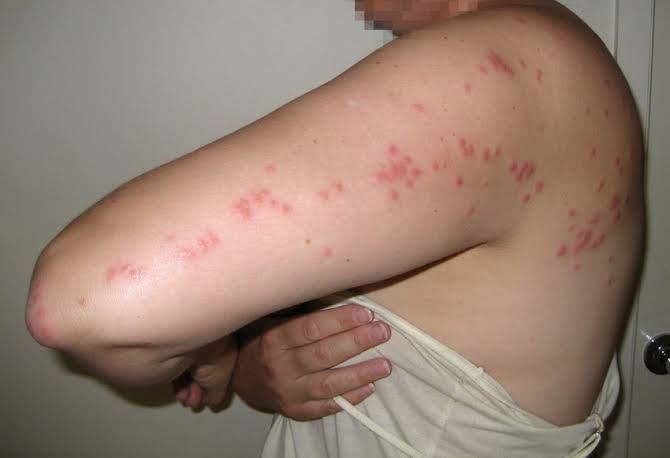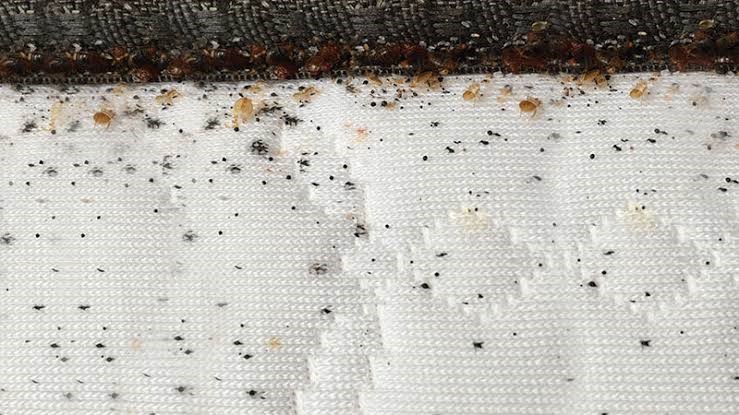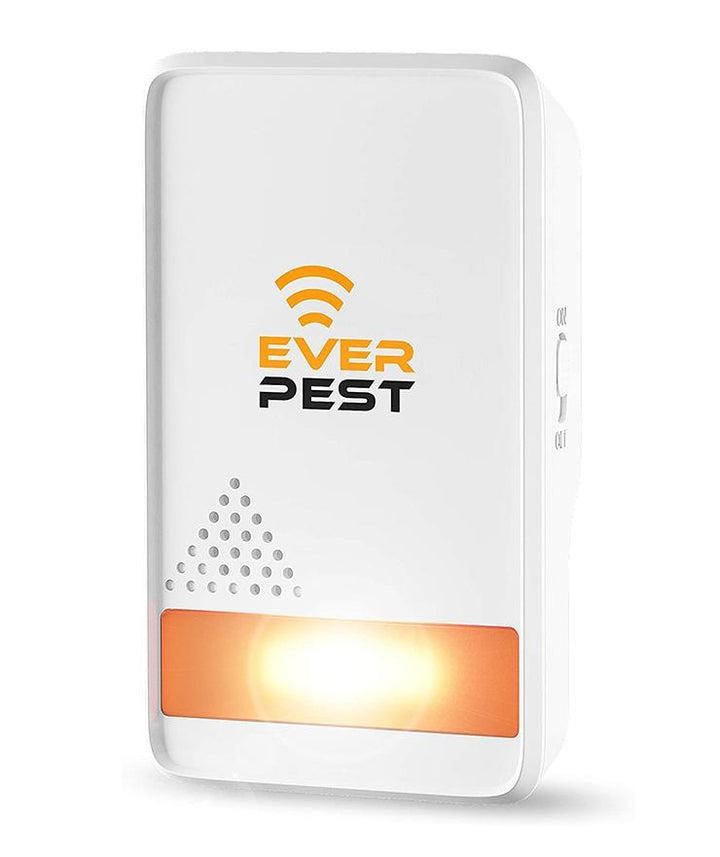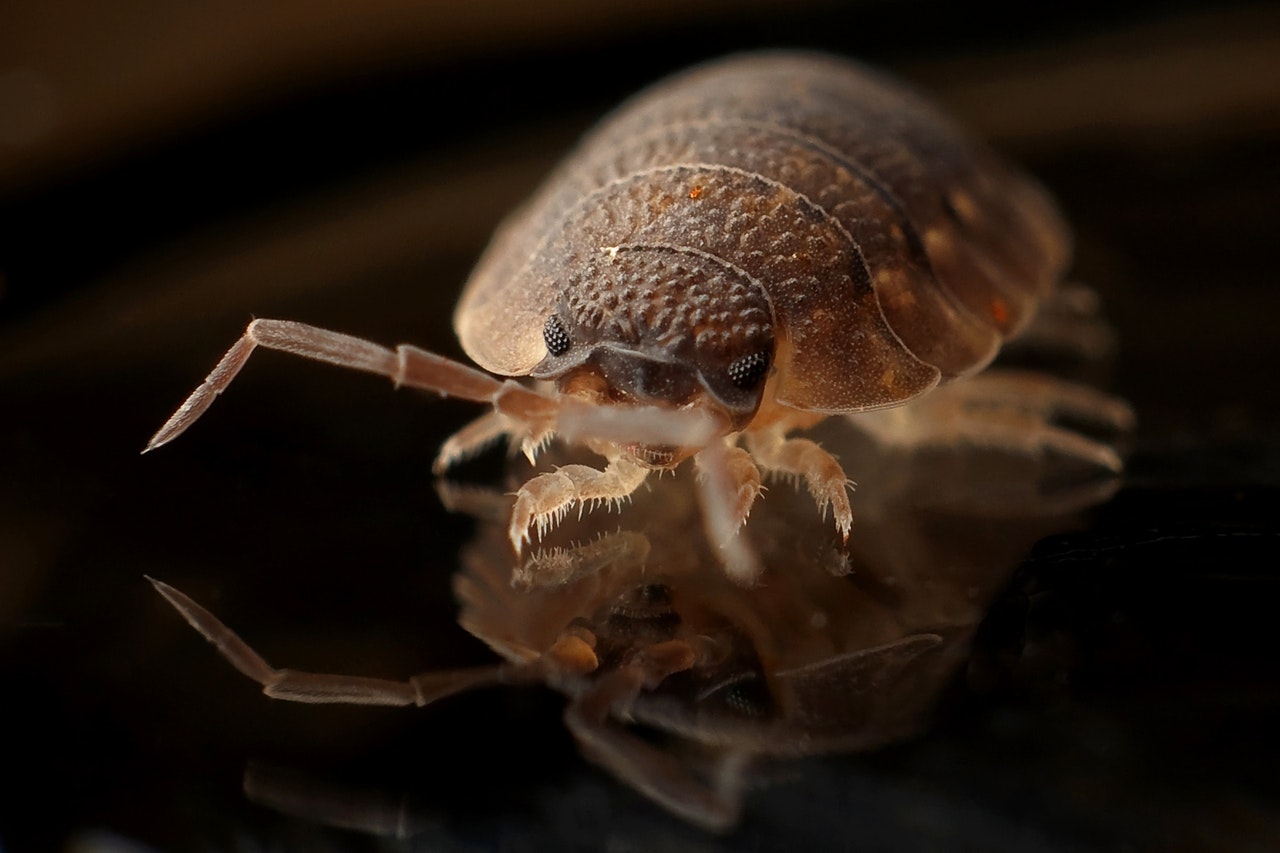6 Symptoms / Signs Of A Bed Bug Infestation
Some questions have been reaching us more and more frequently from our customers in recent years before they bought our ultrasonic bed bug repeller. If you notice a sting or bite on your body, many people today usually immediately think of a parasite but need the help of an expert for more clarity.

A thorough inspection of the bedroom with a flashlight and magnifying glass can help find the pest hiding places, knowing what the hiding places and breeding grounds for these sucking parasites are.
Bed Bug: These are the questions:
- How do I know if I have bugs and if I’ve been bitten?
- Where do bugs hide?
- What can I do to fight bugs?
How Do I Recognize Bugs?
Bites, bloodstains, feces, or even a sweet smell: The signs and symptoms that you can use to recognize a bedbug inversion. An expert pest controller will help you with clear determination, but these tips may already be able to make an initial assessment.
Found Live And Dead Bugs?
bugs can grow up to 6 mm in size and can even be seen physically. After sucking, they can even get slightly bigger when they are full. These parasites hide in daylight but go in search of hosts to draw blood from at night. This is what bugs look like:
- 4 to 6 millimeters body length
- red-brown color
- six hairy legs
- flat body shape
- bug eggs are white, off-white, and just under a millimeter across, making them difficult to spot.
Do Bugs “Go Away On Their Own”?
Unfortunately, the parasites don’t make it that easy. bugs usually live between six months and a year, but they can also survive months without food
Correctly Interpret Bites Or Blood Stains
You usually wake up with noticeable stings, bites, or small swellings on your body and only look into the subject of bugs in more detail after researching on the Internet. If this is how you found us: don’t worry, there is a professional and carefree solution to your problem.
The sucking usually hits a human blood vessel. The result: blood leaks out, which is sucked up by the parasite. This process causes blood stains on sheets, covers, and sleepwear due to delayed blood clotting.
Note: Bloodstains can of course also have other causes and do not necessarily have to be caused by a bug bite. However, multiple symptoms may indicate a parasite infestation.
Bug Droppings
Another indication of bug inversion is minimal black droppings that are left on the human skin when walking, in hiding places, and when sucking.

The droppings are approximately 0.5 – 1.0 millimeters in size. Large accumulations of these remnants can often be found near bug hiding places, e.g. on mattresses, bed frames, or behind wallpaper.
Bug Molt Residues
bugs go through a total of 5 larval stages during their development, with each phase beginning with a molt. The molting residues left behind are usually found near parasites’ nests. The skins are very light, almost completely transparent and their rounded shape is reminiscent of pests.
The Smell Of Bugs
One of the most typical signs of a bug infestation is the sweet, disgusting smell of bugs, which occurs especially with heavier infestations. These pests have stinky glands that emit an oily secretion. This serves to ward off enemies as well as for reproduction.
Find Typical Hiding Places Of Bugs
To identify a possible infestation without a doubt, it is important to know the typical hiding places of bugs.
A detective’s instincts are required here to locate the main hiding places and breeding grounds. These parasites prefer to stay in inhabited, closed rooms near human sleeping and resting places. For example bedroom, living room, pieces of furniture.
Here, people often stay relatively motionless for a long time and represent “found food” for bugs. bugs love warmth and darkness. They hide in crevices, cracks, and joints, preferring materials such as wood, paper, and textiles. Cool and humid places tend to be avoided.
The Typical Hiding Places Of Bugs Can Be:
- Bed drawers, as well as storage and storage areas under the bed
- Bed frames, bedposts, slatted frames, mattresses (especially folds, seams, zippers)
- Bedding, blankets, pillows, blankets
- Bedside tables or chests of drawers (in drawers and screw holes)
- Books, alarm clocks, bedside lamps, picture frames
- outlets and light switches
- ceiling lamps
- shutter boxes
- Joints of floorboards, decorative strips, light guide rails, nails, and drill holes
- In cracks in ceiling or wall stucco, as well as behind loose pieces of wallpaper
- In the carpet weave and behind baseboards near sleeping, seating, and lounging areas
- Behind wall paneling, wall mirrors, door and window frames
- In cracks and joints of sofas, suites, armchairs, or other seating
- In sleeping places of pets such as dogs and cats, in cages, etc.
How Can I Fight Bugs?
bugs are stubborn and masters at hide-and-seek. Home remedies such as freezing objects or suction are usually not sufficient for long-term control. Finding all the hiding places and nests is often only possible for pest experts or using ultrasonic pest control if you want to solve the problem faster.

Where To Start As A Layman?
Do I have to dispose of the mattress or the bed frame? And what if they are already nesting in nightstands and sockets?
For private individuals, the feeling of disgust often prevails at having to lie down in an infested bed. For companies, especially the hotel industry, a bug infestation can quickly take on critical proportions, from an angry guest with a possible negative Internet rating to bugs being carried into other hotel rooms.
We, therefore, recommend contacting the pest expert directly if you suspect bugs. They quickly provide clarity and solutions to the pest problem.
What Is An Ultrasonic Pest Repellent?
An ultrasonic Pest Repeller is an electronic device that uses ultrasonic sound waves to repel insects, rodents, and other pests. Although humans are not able to hear these sounds, many animals, insects, and rodents do. There is much discussion about the ability of an ultrasonic pest repellent to drive away pests. While some say that ultrasonic pest repellents made their homes free of pests, others claim that the device is only partially / temporarily effective or simply ineffective.
How Ultrasonic Pest Repellers Work
Ultrasonic pest repellents depend on ultrasonic frequencies to disrupt pests. Ultrasound frequency is any frequency above 20,000 Hz, which is the maximum limit of human hearing. People cannot hear sounds beyond this point because the human drum does not vibrate fast enough to detect these sounds. However, other animals, such as dogs, cats, insects, spiders, and rodents, can hear these ultrasound sounds. While different animals respond to ultrasound sounds in different ways, most do not like these sounds and flee as a result.
Applications
Ultrasonic pest repellent can be used in any home, office, or warehouse to reduce or eliminate a wide variety of pests. Most households in the United States and abroad have moderate to severe cockroach infestation. These cockroaches can be driven away as soon as the ultrasonic pest repellent is activated.
Advantages
Ultrasonic pest repellents have several advantages. They are environmentally friendly and do not pose any health risk to users. They do not contain any chemicals and do not need to be cleaned or emptied like other pest control agents. Because people do not hear ultrasound frequencies. The user will generally notice when using the device is the reduction of pests in the population.
Conclusion
As you can see, bugs have many ways of penetrating an apartment and making themselves kings there. Getting to the root of every abnormal sucking, especially at night, will go a long way in discovering and curbing bugs invading your apartment.

